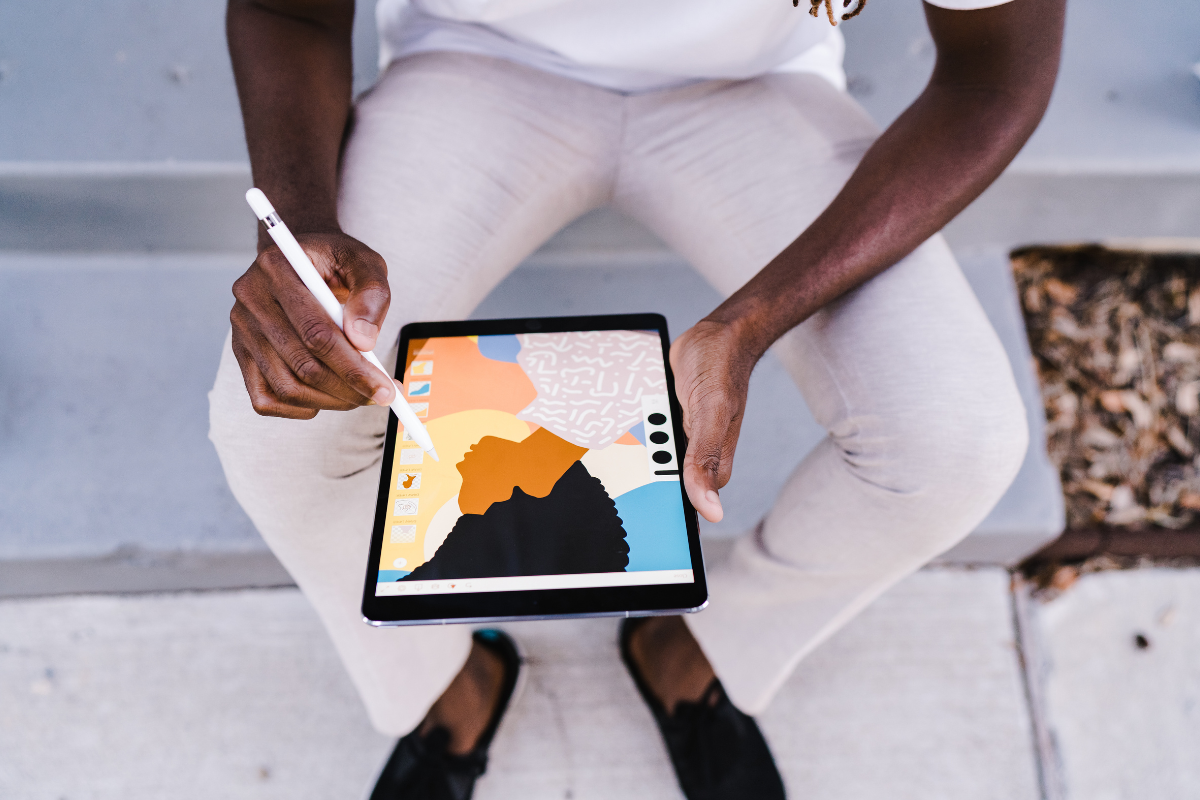If you’re an iPad or iPhone user wondering where are downloads on iPad you’re probably familiar with the process of downloading files from the internet.
However, once you’ve successfully downloaded something, it can sometimes be challenging to locate it on your device.
In this article, we’ll guide you on where to find your downloaded files on your iPad or iPhone, addressing the specific question of “Where are downloads on iPad?”
To access your downloads, you’ll need to use the Files app.
This app is pre-installed on your device and allows you to manage your files and folders.
Once you’ve opened the Files app, you’ll need to navigate to the Downloads folder.
This folder stores all of your downloaded files, including photos, videos, music, and documents.
If you can’t locate the Files app on your home screen, you can easily find it by swiping down from the center of your home screen and searching for “Files.”
Once you’ve found the app, you can access your downloads by tapping on the Browse tab and navigating to iCloud Drive > Downloads.
From there, you can view and manage all of your downloaded files.
Table of Contents
ToggleWhere Are Downloads On iPad?
If you’re wondering where your downloaded files are on your iPad, you’re not alone.
With so many different apps and ways to download files, it can be hard to keep track of everything.
In this section, we’ll go over three different ways to find your downloads on your iPad: using the Files app, using Safari, and using Mail.

Using The Files App
The Files app on your iPad is a great way to manage all of your files, including your downloaded files.
Here’s how to find your downloads using the Files app:
- Open the Files app on your iPad.
- Tap the Browse tab.
- Tap iCloud Drive.
- Tap the Downloads folder to see your downloaded files.
If you’ve downloaded files from other sources, like Google Drive or Dropbox, you may need to navigate to those folders instead.
You can also move files around by tapping and holding on a file and selecting “Move” to move it to a different folder.
Using Safari
If you’ve downloaded a file from Safari on your iPad, it’s stored in the Downloads folder in the Files app.
Here’s how to download a file from Safari:
- Launch Safari on your iPad.
- Navigate to the webpage that contains the file you want to download.
- Tap on the link to the file that you want to download.
- Tap on the “Download” button to confirm the download.
Once the download is complete, you can find the file in the Downloads folder in the Files app.
Using Mail
If you’ve received an email with an attachment on your iPad, you can download the attachment and find it in the Downloads folder in the Files app.
Here’s how to download an attachment from Mail:
- Open the Mail app on your iPad.
- Find the email with the attachment you want to download.
- Tap and hold on the attachment.
- Tap “Save Attachment” to save the file to your iPad.
Once the download is complete, you can find the file in the Downloads folder in the Files app.
In conclusion, finding your downloads on your iPad is easy once you know where to look.
Whether you’re using the Files app, Safari, or Mail, you can easily find and manage your downloaded files.
Using The Files App
The Files app on your iPad is a great way to manage and organize all of your downloaded files.
With the Files app, you can easily access, view, and organize your downloaded files in one central location.
Accessing The Downloads Folder
To access your downloaded files, open the Files app and tap on the Browse tab.
From there, tap on iCloud Drive and then tap on the Downloads folder.
Here, you will find all of your downloaded files.
If you have downloaded files that are not in the Downloads folder, you can also access them by tapping on the On My iPad option in the Files app.
This will show you all of the files that are stored locally on your iPad.

Viewing Downloaded Files
Once you have accessed the Downloads folder, you can view your downloaded files by tapping on them.
Depending on the file type, you may be able to edit the file using Markup or open it in another app.
If you are looking for a specific file, you can use the search bar at the top of the Files app to quickly find it.
Organizing Downloaded Files
To keep your downloaded files organized, you can create new folders in the Files app.
To do this, tap on the Edit button in the top-right corner of the screen and then tap on the New Folder button.
You can also move files into different folders by tapping and holding on a file and then dragging it to the desired folder.
If you want to copy a file instead of moving it, simply drag the file to the desired folder while holding down the Option key.
If you have downloaded multiple files that you want to keep together, you can compress them into a zip folder.
To do this, select all of the files you want to compress and then tap on the Compress button in the top-right corner of the screen.
Overall, the Files app is a great tool for managing and organizing your downloaded files on your iPad.
With its user-friendly interface and powerful features, you can easily keep all of your files in one central location.
Using Safari
When browsing the internet on your iPad, you may come across files that you want to download.
Safari makes it easy to download files, and you can access them later in the Files app.
Viewing Downloaded Files
To view your downloaded files in Safari, tap the Safari app on your iPad.
Next, tap the Downloads button, which looks like an arrow pointing down.
Here, you can see a list of all the files you have downloaded.
If you want to open a downloaded file, tap on it.
If you are not sure where the file is saved, you can tap and hold on the file to see its location.
You can also use the Files app to find your downloaded files.
Saving Downloads To iCloud Drive
By default, downloads in Safari are saved to the iCloud Drive folder in the Files app.
This allows you to access your downloaded files on all of your Apple devices, as long as you are signed in with the same Apple ID.
If you want to change where your downloads are saved, you can do so in the Safari settings.
To access Safari settings, go to Settings > Safari.
Under the General section, you will see a Downloads option. Here, you can choose to save your downloads to iCloud Drive, On My iPhone, or another location.
If you choose to save your downloads to On My iPhone, they will be stored locally on your device.
This can be useful if you want to keep certain files separate from your iCloud storage.
However, keep in mind that local storage is limited, so you may need to periodically delete old files to free up space.
In summary, Safari makes it easy to download files on your iPad.
You can view your downloaded files in the Safari app or the Files app, and you can choose to save them to iCloud Drive or On My iPhone.
With these options, you can easily manage your downloads and access them whenever you need them.

Using Mail
If you receive an email with an attachment on your iPad, you can view and download it directly from the Mail app. Here’s how:
Viewing Downloaded Attachments
- Open the Mail app and go to the email with the attachment.
- Tap on the attachment to open it.
- If it’s an image or a PDF, you can swipe left or right to view multiple pages.
- To save the attachment, tap and hold on it until a menu appears.
- Tap “Save Attachment” to save it to your iPad.
Saving Attachments To iCloud Drive
If you want to save the attachment to your iCloud Drive, follow these steps:
- Open the Mail app and go to the email with the attachment.
- Tap on the attachment to open it.
- Tap and hold on the attachment until a menu appears.
- Tap “Share” and then select “Save to Files.”
- Choose the folder you want to save the attachment to, or create a new folder.
- Tap “Save” to save the attachment to your iCloud Drive.
Note that you can also save attachments to other cloud storage services like Google Drive or Dropbox if you have them installed on your iPad.
Overall, the Mail app on your iPad makes it easy to view and download attachments.
Whether it’s a photo, PDF, or document, you can quickly access it from your email and save it to your iPad or iCloud Drive.
Key Takeaways
Now that you know where to find downloads on your iPad, here are some key takeaways to keep in mind:
- The Files app is the central hub for all your downloads on iPad. You can access it by swiping down from the center of your Home Screen and searching for the Files app, or by opening it from your app library.
- Once you’re in the Files app, you can find your downloaded files by tapping the Browse tab, then selecting iCloud Drive and finally the Downloads folder.
- You can also save files to other folders in iCloud Drive or on your iPad by tapping the More (three dots) button and selecting Add to iCloud Drive or Add to Files.
- If you want to delete a downloaded file, simply tap and hold on it until a pop-up menu appears, then select Delete.
- You can also manage your downloads from other apps, such as Photos and Apple Music. For example, to delete a downloaded photo, open the Photos app, select the photo, tap the Trash Can icon, then select Delete Photo.
- If you want to download a file from the internet, you can do so using Safari or another web browser. Simply tap and hold on the link to the file, then select Download Linked File.
- Keep in mind that some file types, such as certain video formats, may require a third-party app to play or open on your iPad.
By following these tips and tricks, you can easily find, manage, and organize all your downloads on your iPad.











